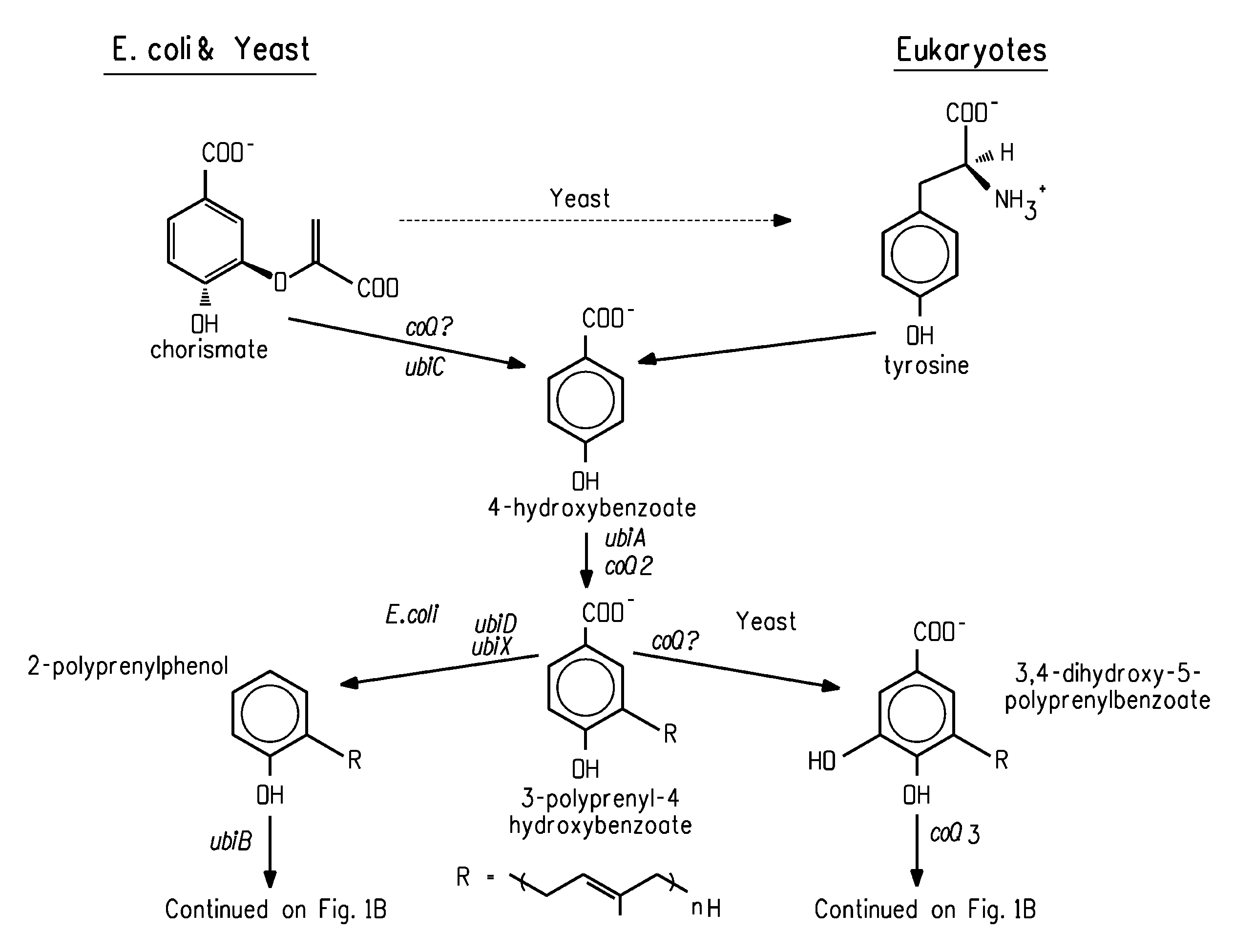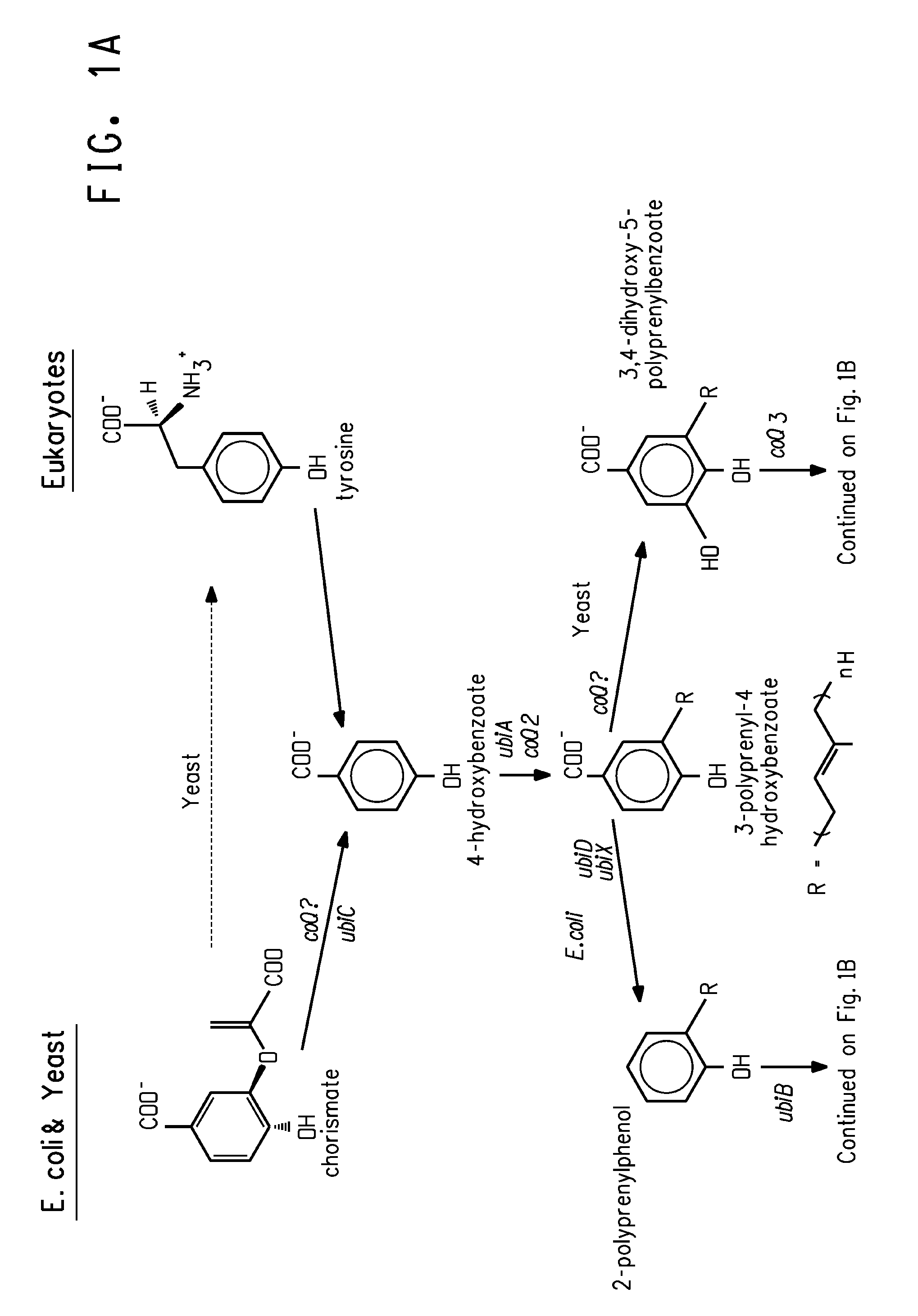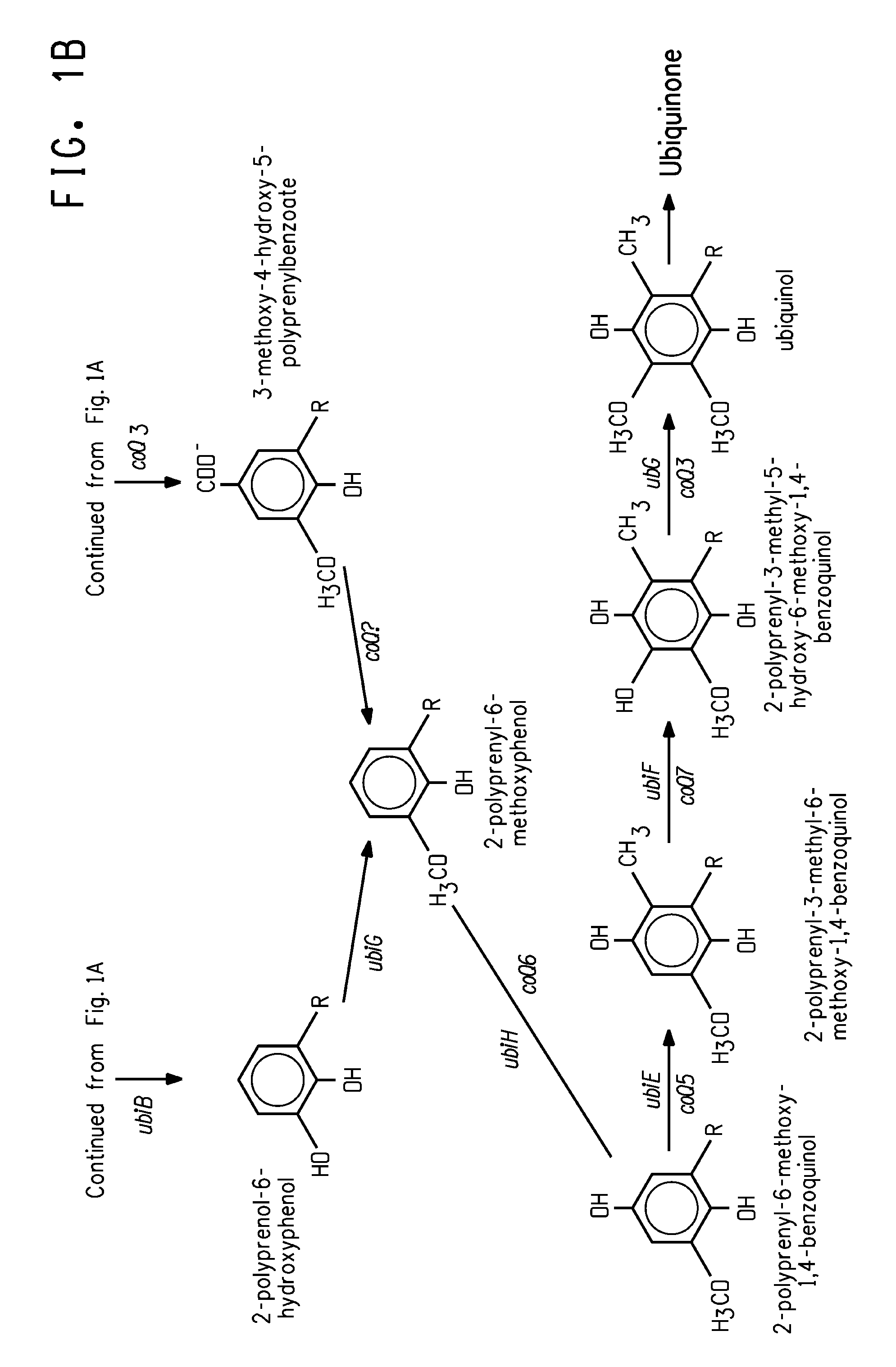Coenzyme Q10 Production in a Recombinant Oleaginous Yeast
a technology of oleaginous yeast and coenzyme q10, which is applied in the field of biotechnology, can solve the problems of cellular and tissue damage, many of the synthetic antioxidants currently used in the market are undesirable, and achieve the effects of reducing the number of side effects, reducing the risk of side effects, and improving the effect of oxidative stress
- Summary
- Abstract
- Description
- Claims
- Application Information
AI Technical Summary
Benefits of technology
Problems solved by technology
Method used
Image
Examples
example 1
DNA Transformation in Yarrowia lipolytica
[0232]The following general procedure was used to make Yarrowia lipolytica chemically competent for DNA transformation (Chen, D. C. et al., Appl. Microbiol. Biotechnol., 48(2):232-235-(1997)).
[0233]Yarrowia cells were streaked onto YPD media plates 1 day prior to transformation. The cells were incubated at 30° C.
[0234]Several large loopfuls (˜3) of cells from the YPD plate were resuspended in 1 mL of transformation media [comprising 2.25 mL 50% PEG (average MW 3350); 0.125 mL 2 M lithium acetate pH 6.0; 0.125 mL 2 M dithiothreitol (DTT; prepared fresh prior to each use); and 50 μL salmon sperm DNA (10 mg / mL)].
[0235]The Yarrowia cells suspended in transformation solution were transferred as 100 μL aliquots into microfuge tubes using a large-bore pipette tip. Approximately 100 to 500 ng (5 μL) of the desired plasmid (in linearized form when transforming integration plasmids) was added and the mixture was incubated at 39° C. for 1 hr with vortex...
example 2
Coenzyme Q Pathway and Profile in Wildtype Yarrowia lipolytica
[0239]The present Example describes the quantification of CoQ9 in wildtype Yarrowia lipolytica. Specifically, determination of the amount of CoQ9 in Yarrowia lipolytica strain ATCC #20362 was made using an Agilent series 1100 HPLC equipped with a DAD detector. The sample was generated by extracting the oil in 3:1 hexane:methanol overnight, partitioning the solvents using a 1 N NaCl solution and stripping the hexane with a Büchi® Rotavapor® (New Castle, Del.).
[0240]Three samples of approximately 15, 38, and 86 mg were added to a 4 mL amber vial. Then, 100 μL of glass beads and 1.0 mL of a previously sparged 1:1 tetrahydrofuran(THF) / methanol (MeOH) solution were added and shaken for 15 min at 200 rpm. The sample was then transferred to a Whatman uni-prep vial and analyzed.
[0241]A 1 mg standard sample of CoQ9 received from Fluka Chemical Corp. (Milwaukee, Wis.; Catalog #27597, lot #378472) was diluted to 0.1 mg using 1:1 THF...
example 3
Construction of Yarrowia Expression Plasmid pDMW359
[0243]The present Example describes the generation of pDMW359, comprising a chimeric FBAIN::EgD9e::Pex20-3′ gene, wherein EgD9e refers to a Δ9 elongase enzyme (SEQ ID NO:4) isolated from Euglena gracilis, encoded by SEQ ID NO:3. EgD9e is described in Int'l. App. Pub. No. WO 2007 / 061742.
[0244]Plasmid pDMW359 was derived from plasmid pZUF17 (FIG. 4A; SEQ ID NO:5; comprising a synthetic Δ17 desaturase gene [“D17st”] derived from Saprolegnia diclina (U.S. Pat. App. Pub. No. 2003 / 0196217 A1), codon-optimized for expression in Yarrowia lipolytica (U.S. Pat. No. 7,238,482)). Specifically, a NcoI / NotI fragment containing the coding region of the wild type Euglena gracilis Δ9 elongase (EgD9e) was used to replace the NcoI / NotI fragment containing the Δ17 desaturase coding region of pZUF17. The product of this ligation was pDMW359 (FIG. 4B; SEQ ID NO:6), which thereby contained the following components:
TABLE 8Components of Plasmid pDMW359 (SEQ...
PUM
| Property | Measurement | Unit |
|---|---|---|
| temperature | aaaaa | aaaaa |
| temperature | aaaaa | aaaaa |
| temperature | aaaaa | aaaaa |
Abstract
Description
Claims
Application Information
 Login to View More
Login to View More - R&D
- Intellectual Property
- Life Sciences
- Materials
- Tech Scout
- Unparalleled Data Quality
- Higher Quality Content
- 60% Fewer Hallucinations
Browse by: Latest US Patents, China's latest patents, Technical Efficacy Thesaurus, Application Domain, Technology Topic, Popular Technical Reports.
© 2025 PatSnap. All rights reserved.Legal|Privacy policy|Modern Slavery Act Transparency Statement|Sitemap|About US| Contact US: help@patsnap.com



